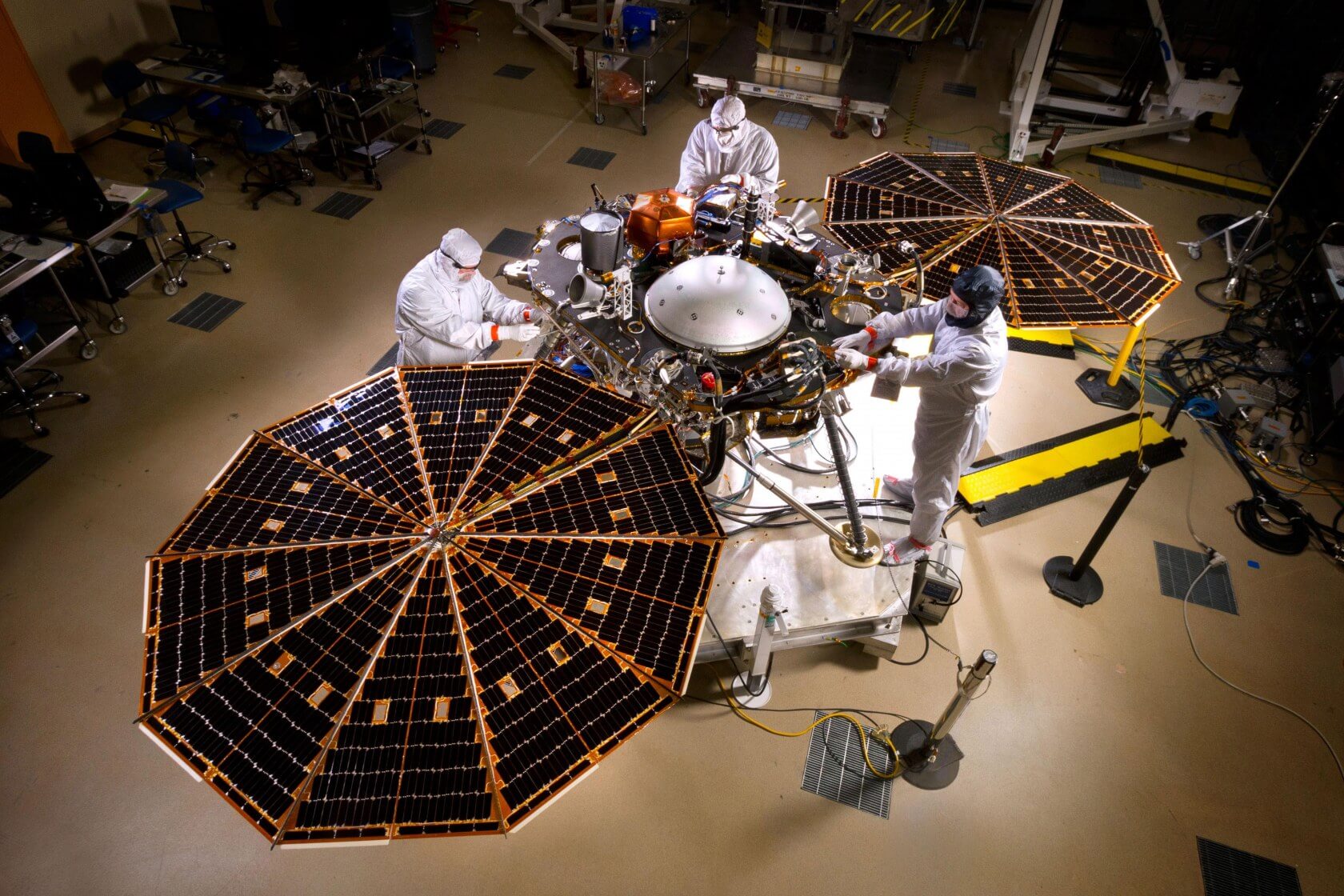What just happened? If you're a fan of all things Mars and space-related, we've got some good news for you. Today, NASA's InSight (Interior Exploration using Seismic Investigations, Geodesy and Heat Transport) lander finally made its way through deep space, successfully touching down on the Red Planet's surface with no significant complications to speak of.
As reported by Wired, confirmation of the lander's touchdown was relayed to NASA engineers courtesy of two "briefcase-sized" satellites, dubbed Mars Cube One-A and Mars Cube One-B.
Update: NASA has tweeted the first photo taken by InSight after the lens cover was off. See below.
There's a quiet beauty here. Looking forward to exploring my new home. #MarsLanding pic.twitter.com/mfClzsfJJr
--- NASAInSight (@NASAInSight) November 27, 2018
As you can probably imagine, everyone in NASA's Mission Control room was pretty happy to hear that the lander had touched down safely. You can watch their reactions for yourself in the following 360 video, which was livestreamed on one of the organization's official YouTube channels.
InSight's first job is to deploy solar panels, which will be used to keep the machine running during its time on Mars. While it'll be some time before that happens, space enthusiasts have something to analyze in the interim: InSight's first photograph of Mars, which can be seen below.

The picture is far from clear, due in no small part to the thick layer of dust and dirt coating InSight's camera lens. However, we can likely expect to see better-quality images of the Red Planet in the future, as InSight's mission progresses.
If you haven't been keeping up with NASA's InSight project so far, the lander was first launched on May 5, with the goal of giving us our first real look at Mars' interior.
InSight will spend its days performing a "sweeping geophysical investigation" that could answer some of science's longest-standing questions about the planet - specifically, questions about its "formation, evolution, and composition."
Update 11/27/2018: An earlier version of this article mistakenly implied that the InSight lander was a mobile device. This has since been corrected. Furthermore, a higher quality image taken by the lander is now available - see it below.

